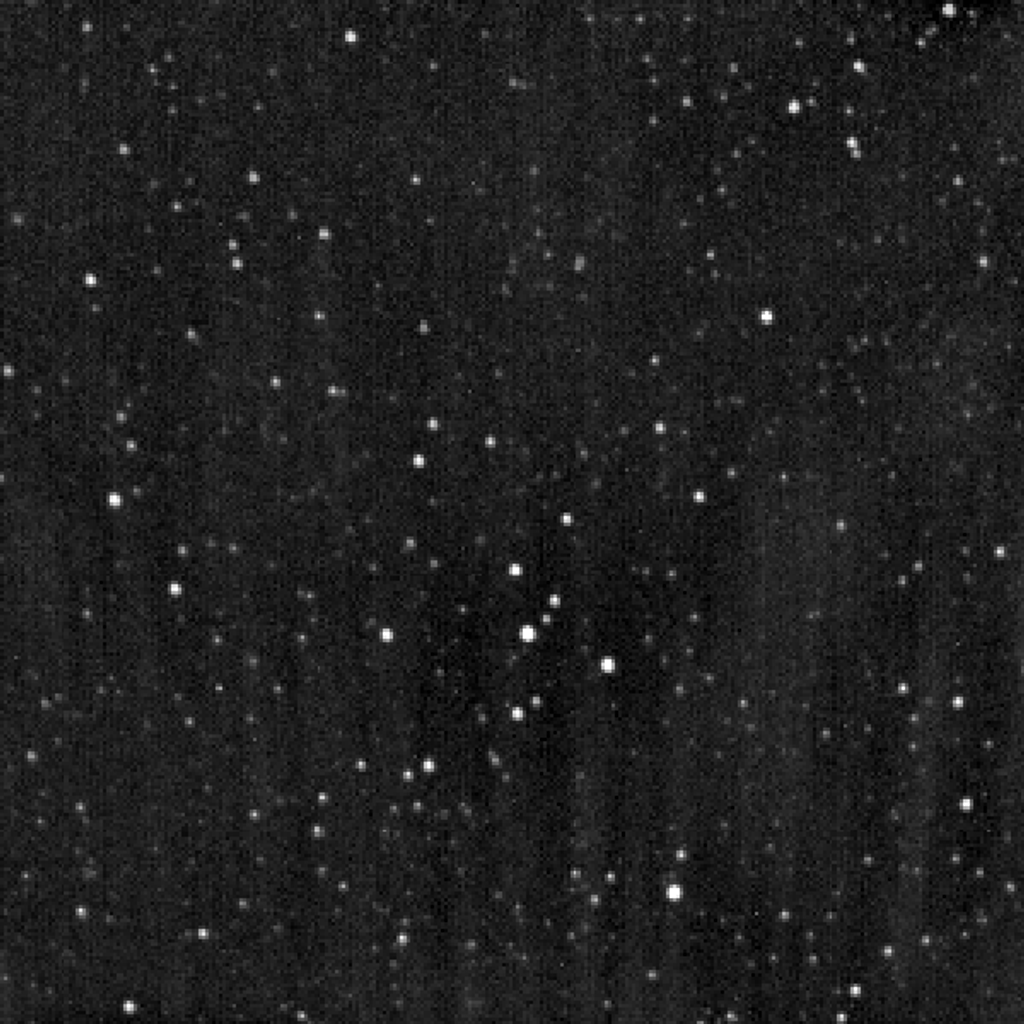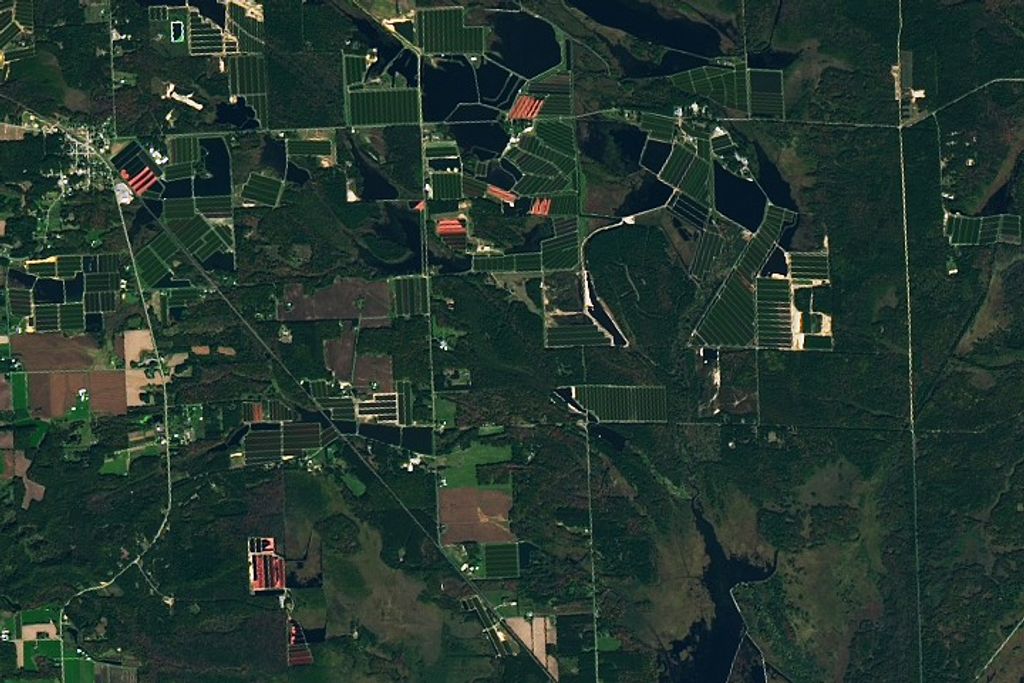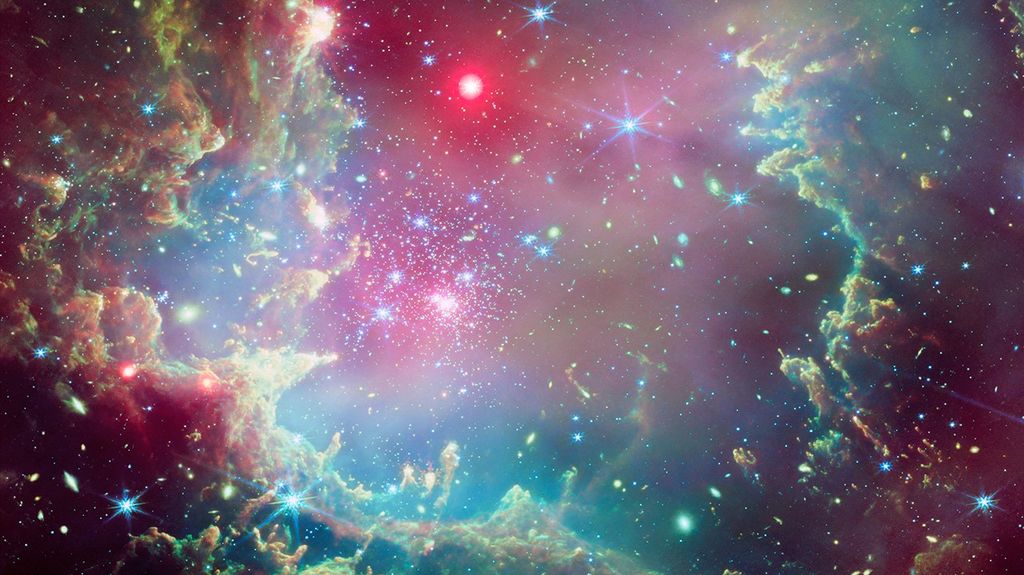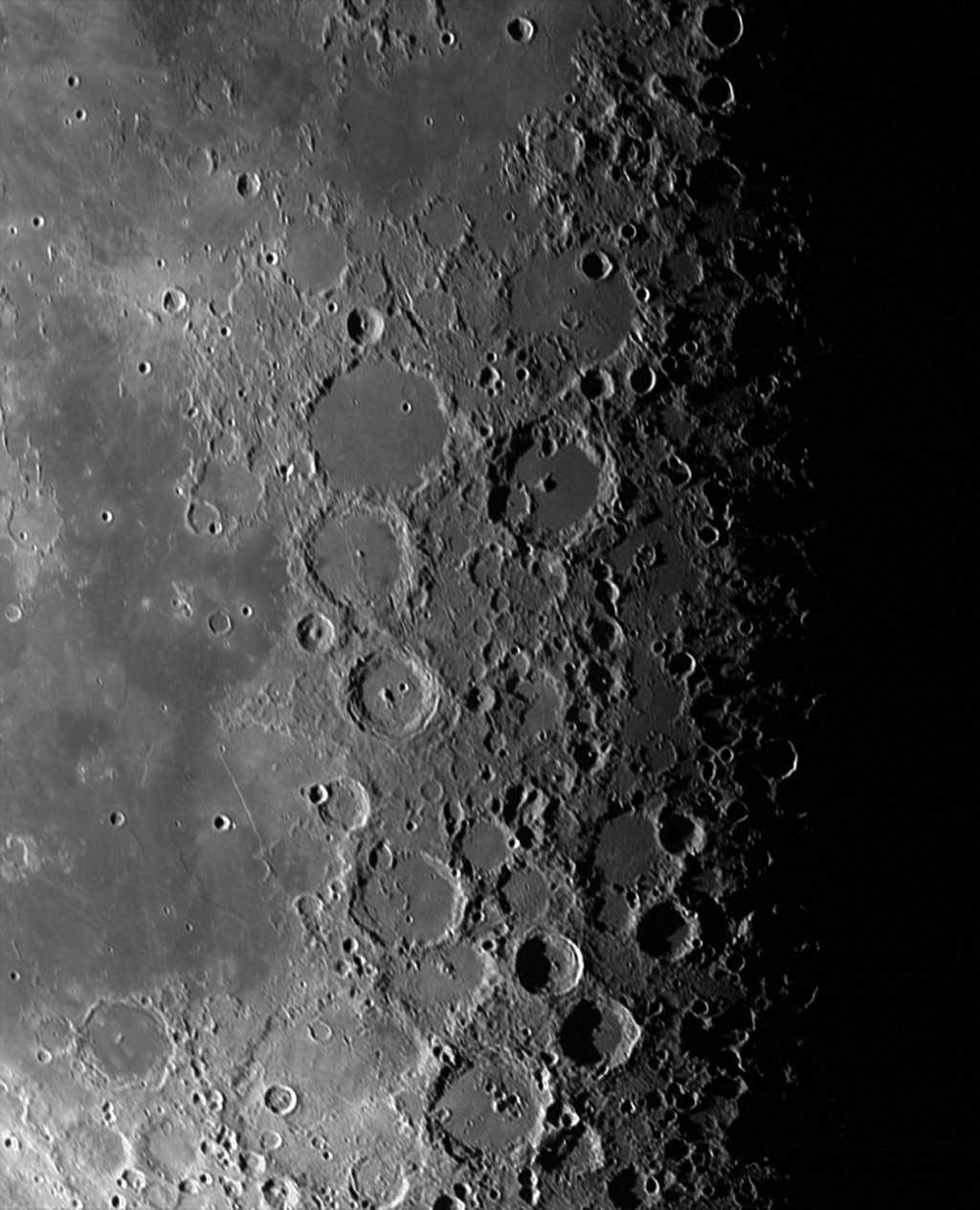1 min read
Scattered Light from the Boomerang Nebula

The Hubble Space Telescope has "caught" the Boomerang Nebula in these new images taken with the Advanced Camera for Surveys. This reflecting cloud of dust and gas has two nearly symmetric lobes (or cones) of matter that are being ejected from a central star. Over the last 1,500 years, nearly one and a half times the mass of our Sun has been lost by the central star of the Boomerang Nebula in an ejection process known as a bipolar outflow. The nebula's name is derived from its symmetric structure as seen from ground-based telescopes. Hubble's sharp view is able to resolve patterns and ripples in the nebula very close to the central star that are not visible from the ground.
Astronomers are uncertain of the cause of bipolar outflow in this, and many other, young nebulae like the Boomerang. It may be that a disk of slow-moving material is situated around the equator of the star, thereby blocking more rapidly moving ejected material there, and allowing only matter closer to the poles to be ejected. Another consideration may be that magnetic fields are responsible for constraining the material and thus causing the double-lobed shape of the nebula.
Bipolar outflows are seen to occur both from very young stars ("protostars") that are still in the process of collapsing and forming, and from old stars nearing the ends of their lives that have become bloated red giants. The Boomerang is believed to be the ejected outer layers from an old red giant. Each lobe of the Boomerang Nebula is nearly one light-year in length, making the total length of the nebula half as long as the distance from our Sun to our nearest neighbors- the Alpha Centauri stellar system, located roughly 4 light-years away.
These images of the Boomerang were taken in early 2005 with the Advanced Camera for Surveys onboard Hubble. A visible light filter was used in combination with a series of polarization filters. Similar to polarizing sunglasses that are used to reduce the amount of scattered light that enters our eyes on a sunny day, the telescope's polarizing filters allow only light of a specific polarization angle to pass through to the camera's detector. By combining images taken at different polarization angles, astronomers can study light scattering in the nebula and the properties of the small dust particles responsible for the scattering. Colors were assigned to represent different polarization components, and then those colors were adjusted to accentuate features in the nebula, resulting in the multi-hued composite image.
The Boomerang Nebula is located about 5,000 light-years from Earth in the direction of the Southern constellation Centaurus. Submillimeter radio measurements made in 1995 show the deep interior of the nebula to have a temperature of only one degree Kelvin above absolute zero, with absolute zero equal to nearly -460 degrees Fahrenheit. This makes the inner regions of the Boomerang Nebula one of the coldest known places in the universe.
About the Object
- R.A. PositionR.A. PositionRight ascension – analogous to longitude – is one component of an object's position.12h 44m 46.09s
- Dec. PositionDec. PositionDeclination – analogous to latitude – is one component of an object's position.-54° 31' 12.0"
- ConstellationConstellationOne of 88 recognized regions of the celestial sphere in which the object appears.Centaurus
- DistanceDistanceThe physical distance from Earth to the astronomical object. Distances within our solar system are usually measured in Astronomical Units (AU). Distances between stars are usually measured in light-years. Interstellar distances can also be measured in parsecs.About 5,000 light-years (1,500 parsecs)
- DimensionsDimensionsThe physical size of the object or the apparent angle it subtends on the sky.This image is 1.1 arcminutes (1.6 light-years or 0.5 parsecs) across. The nebula has a semi-major axis of roughly 1 light-year (or 0.3 parsecs).
About the Data
- Data DescriptionData DescriptionProposal: A description of the observations, their scientific justification, and the links to the data available in the science archive.
Science Team: The astronomers who planned the observations and analyzed the data. "PI" refers to the Principal Investigator.This image was created from HST calibration proposal: 10378: J.Biretta, R. Lucas and V. Platais (STScI). - InstrumentInstrumentThe science instrument used to produce the data.HST>ACS/WFC
- Exposure DatesExposure DatesThe date(s) that the telescope made its observations and the total exposure time.January - May 2005, Exposure Time: 1.3 hours
- FiltersFiltersThe camera filters that were used in the science observations.F606W (V), [F606W (V) + POL0V], [F606W (V) + POL60V], [F606W (V) + POL120V]
- Object NameObject NameA name or catalog number that astronomers use to identify an astronomical object.Boomerang Nebula
- Object DescriptionObject DescriptionThe type of astronomical object.Bipolar Reflection Nebula
- Release DateSeptember 13, 2005
- Science ReleaseHubble Catches Scattered Light from the Boomerang Nebula
- Credit

Pink: F606W (V) + POL0V Yellow: F606W (V) + POL60V Cyan: F606W (V) + POL120V
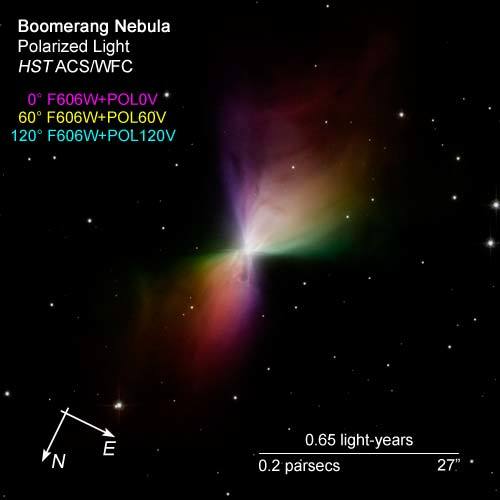
Related Images & Videos

The Boomerang Nebula
This image of the Boomerang Nebula was taken in 1998 with the Wide Field Planetary Camera 2 instrument. Keith Taylor and Mike Scarrott called it the Boomerang Nebula in 1980 after observing it with a large ground-based telescope in Australia. Unable to see the detail that only...
Share
Details
Claire Andreoli
NASA’s Goddard Space Flight Center
Greenbelt, Maryland
claire.andreoli@nasa.gov





